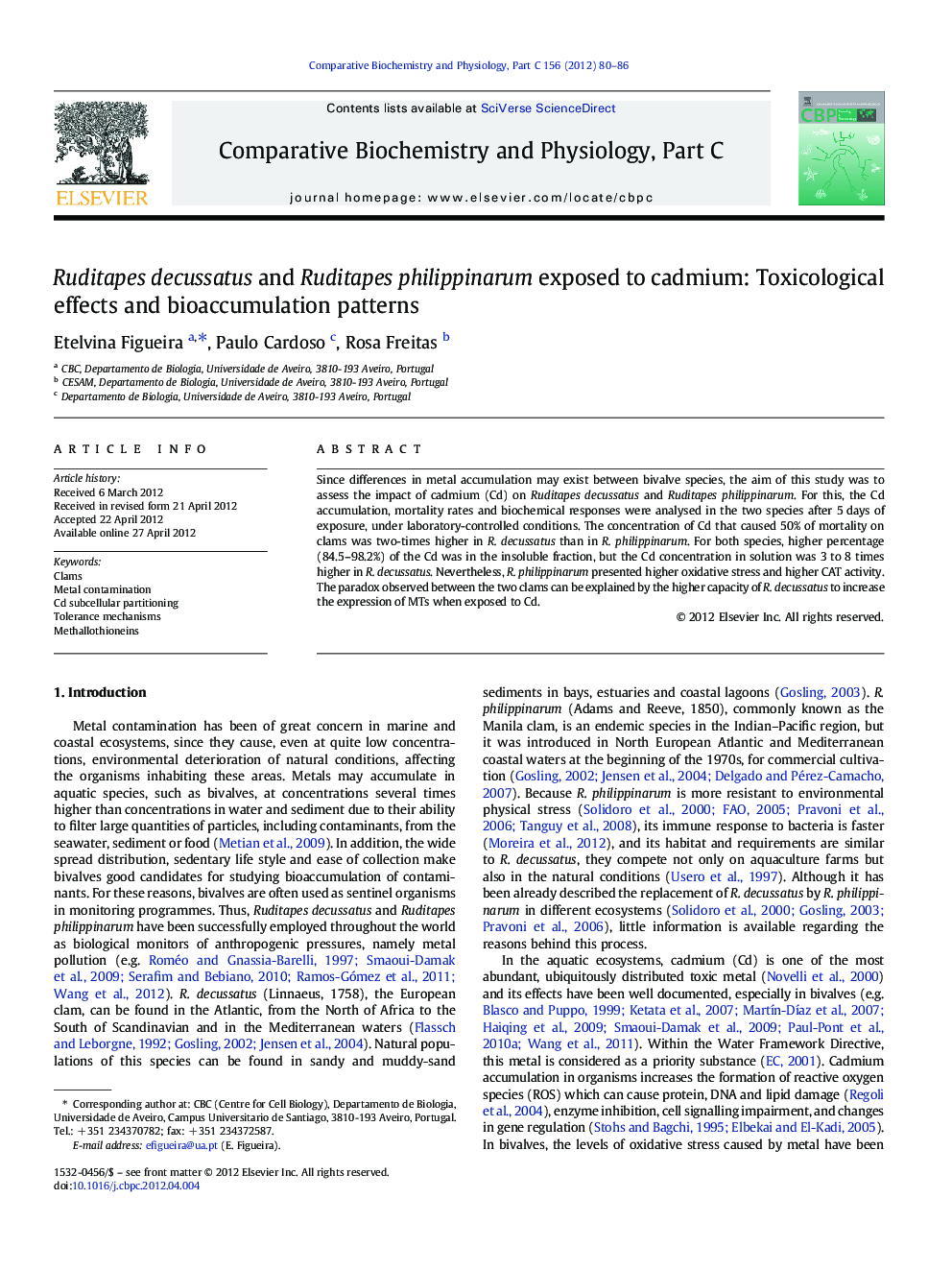| Article ID | Journal | Published Year | Pages | File Type |
|---|---|---|---|---|
| 1977430 | Comparative Biochemistry and Physiology Part C: Toxicology & Pharmacology | 2012 | 7 Pages |
Since differences in metal accumulation may exist between bivalve species, the aim of this study was to assess the impact of cadmium (Cd) on Ruditapes decussatus and Ruditapes philippinarum. For this, the Cd accumulation, mortality rates and biochemical responses were analysed in the two species after 5 days of exposure, under laboratory-controlled conditions. The concentration of Cd that caused 50% of mortality on clams was two-times higher in R. decussatus than in R. philippinarum. For both species, higher percentage (84.5–98.2%) of the Cd was in the insoluble fraction, but the Cd concentration in solution was 3 to 8 times higher in R. decussatus. Nevertheless, R. philippinarum presented higher oxidative stress and higher CAT activity. The paradox observed between the two clams can be explained by the higher capacity of R. decussatus to increase the expression of MTs when exposed to Cd.
